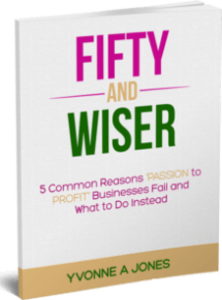People with productive habits can appear to be super achievers. They rarely seem to struggle with the temptation to laze around, eat pizza, waste time online, or procrastinate.
It’s not because they’re superhuman, or that they don’t have temptations. It’s because they’ve chosen habits that support their goals and when the habits they’ve created kick in unconsciously, it eliminates temptation from the menu.
But building productive habits can take a lot of effort and repetition before they take hold. All of us have started a new, healthy habit with enthusiasm only to fail and revert to our old ways. And what about our existing bad habits, the ones we know are preventing us from being our best selves? If it were easy to stop them, we would’ve done it by now. But our bad habits keep us stuck. It could be discouraging if there were no empowering alternatives.
With habits playing such a crucial part in our lives, you’d think we’d know more about mastering them. Sadly, most of us don’t. For instance –
- How do we convert a new, desirable behavior into a routine and make it stick?
- How do we break old, unproductive (or destructive) habits and never look back?
- Why is it so difficult to kick those bad habits, and form new ones?
- Why do so many of us repeat ineffective habits even when we don’t want to?
So many more questions we could ask that start with Why?
Fortunately for us, new discoveries about how the brain forms (and breaks) habits have emerged that make good habit formation attainable. It’s heartening to know that with a few simple strategies, we may be able to control our habits and live a more disciplined and productive life. But first, we must understand the nature of habits.
What Is A Habit?

When most of us think of habits, we tend to think of the kinds of actions that end up on our New Year’s resolutions list of things we’d like to change. Behaviors like eating poorly or too much, procrastinating, multitasking, smoking, not exercising, or wasting hours with ‘screen time’, are just some of the challenges we encounter.
Interestingly, poor habits can reveal more than our personal quirks. They can expose the uglier side of our human nature with things like negativity, complaining, distracted driving, excessive substance use, blaming, gossiping, making insensitive remarks, prejudging people – the list goes on.
When we allow these negative habits to rule our day-to-day lives, we reduce the likelihood of living up to our full potential. It can leave us feeling as though we’re not living our true purpose. It can leave us feeling exhausted and miserable without really knowing why.
Making lasting change is not easy. It takes effort. By mastering our habits, we naturally become more productive in our personal and professional lives. We have the energy and resolve to overcome challenges like:
- Procrastination
- Boredom
- Distractions
- Staying motivated
- Negative self-talk
Well chosen, supportive habits serve us. They make us more efficient. They help us improve our performance and achieve our dreams. Ultimately, they reward us with the experience of a happy life.
Habits – Reflex Action?
Most of us operate on the assumption that habits are just things we do, like a reflex action. Not at all! Our habits are not like breathing or blinking our eyes – which are reflexive actions.
Our habits are behaviors we’ve consciously or subconsciously learned, and they play a huge role in our successes and failures. Much of what we do habitually makes us who we are. Studies have suggested that nearly 50% of our actions are run on autopilot. Some habits are so well programmed we’re able to perform them while we think, problem solve, and carry on a conversation about other things.
Here’s the challenge. Once a behavior becomes a habit, it’s difficult to convince the brain to unlearn and make changes. The brain sets up the habit to be efficient, to protect us from pain, and help us find pleasure. Now we’re telling our brain to undo all of those things that it has been trained to do for our seeming good.
That’s why it’s easier for us to reach for that glass of wine at the end of the workday and settle in for another night of screen time, rather than change things up and go for a walk, learn to play the guitar, or pursue another healthy alternative. Once the habit is firmly imbedded and we toe the line by seeking comfort and consistency over discomfort and change, the brain rewards our routine behaviors with dopamine, the feel-good brain chemical.
When it comes to habits, our mind can feel like our own worst adversary. When we know that a habit is unproductive or even harmful to us, yet we continue to do it, we end up beating ourselves up for being ‘weak’ or lacking motivation, self-discipline, or willpower.
The Habit Loop
How do we eliminate or change old habits that no longer serve us? Research suggests that we can’t kick old habits and pick up new ones simply through discipline, willpower, or tough self-love alone. That leaves us with the question – how do we kick old habits and replace them with new ones if the brain is hardwired to keep old ones, even when they’re unproductive, or even destructive? The answer: by understanding and using what’s been coined, the habit loop.
In 1999, psychologists at Massachusetts Institute of Technology (MIT) made a groundbreaking discovery of habits – how they’re formed and maintained. They pioneered the idea of a cue-routine-reward feedback loop.
Expanding on their work, journalist and author Charles Duhigg introduced the concept of the habit loop in The Power of Habit: Why We Do What We Do in Life and Business. It’s a three-step process that explains why and how habits develop.
Here’s how it works:
Step one is the Cue. The cue is the trigger that sets off the habitual action. Like seeing a jelly donut, for example. Cues can also be environmental (a kitchen, for example) or situational (like an office party).
Step two is the Routine or Action. This is the behavior that’s being repeated. You do it without thinking about it. Like when you’re bored and you reflexively open the fridge door, or you feel that afternoon slump and automatically reach for the pot of coffee.
Step three is the Reward. Your payoff is both the anticipation of the reward and the reward itself. The expectation of the reward sends dopamine surging through the brain, plus, the body gets the reward of the action. Win-win! At least in the short term. The reward reinforces the behavior.
Rewards help our habits become entrenched. When the brain makes the connection between the behavior and the reward, your craving can take over automatically. Of course, this is great if your habit is working out every day. Not so great if the habit is eating pastries or chocolate.
Here’s an example:
Cue – You see a jelly donut in the kitchen at work.
Routine or action – You eat the jelly donut.
Reward – Your brain is showered with dopamine and your taste buds are rewarded. The habit loop is formed. As soon as the behavior becomes automatic, our brain’s decision-making region takes a vacation on jelly donut decisions – it’s now automated!
But let’s say your conscious mind doesn’t want to eat jelly donuts anymore, what then? How do we override the brain to tell it to stop us from eating delicious jelly-filled fried dough?
The first hurdle is to accept the fact that we’re not in charge of our habitual behavior. Many of us operate on the assumption that our habits are decisions we’ve consciously made. But most of them are not. They’re subconsciously formed.
But that’s good news because, once we can accept the idea that much our behavior is subconscious, that means two significant things:
- First, we’re not ‘doing it wrong’ we’re just being our human selves. No shame in that.
- Second, we don’t need to rely on willpower or discipline alone to help us cross the finish line of habit change.
 How To Change Your Habits
How To Change Your Habits
The question then becomes, how can I kick my bad habits, replace them with productive ones, and make those new habits stick? Sounds like a tall order! The most effective way to affect habit change is to disrupt the habit loop.
How? By targeting the cues that support the bad habits we want to change. Like keeping fresh fruit on hand rather than donuts or by avoiding the open bar at the year-end office party, for example.
By replacing, removing, or avoiding the cue, the fuel supply to the bad habit is cut off. It doesn’t happen overnight. It takes repetition and time – the experts say it takes anywhere between 18 and 250 days to permanently change a habit, depending on the person, but the payoffs can be immense.
Here are some other well documented strategies that you can build up to help get you from where you are to where you want to be using new habits:
- Make the habit clear. What if your level of motivation isn’t the issue? What if you are not picking up a new, good habit because the habit is too vague? One day I will stop eating sugar. Not exactly inspiring. Try using James Clear’s formula: “I will [behavior] at [time] in [this location]”. For example, I will stop eating sugar at 7am tomorrow morning in the kitchen. Or I will do 30 minutes of cardio tomorrow after work at 5:30 at Frank’s Gym.
- Set goals that reflect your personal values AND disrupt your bad habits. If your goal is to be an athlete and you want to run a marathon, and it’s doable, you’ll notice the siren call of that jelly donut. Once you realize it’s counterproductive to your new goal, you’ll be motivated to replace the donut eating habit with something more aligned with your values and goals, like eating fruit or drinking smoothies.
- Create a cue that supports your desired habit. Do you want to start going to the gym regularly? Put your gear next to the door where you can see it. Even better, head straight to the gym from work. Or avoid looking at emails in the morning before you exercise.
- Swap habits. Nature abhors a vacuum and so does the brain. When it comes to quitting an old habit, your success rate increases dramatically when you replace it with another, more desirable habit. Make it easier by using the same cue to get started. It can be as easy as filling the habitual red wine glass with sparkling water instead. Or, instead of mindlessly scrolling, use your device to learn how to grow figs, get inspired with a new recipe, or learn about a travel destination you’d love to visit.
- Piggyback new habits onto your current ones. For instance, if you text every evening with friends, try throwing on some running shoes and walk around the block while you chat. Make it a game and set some distance goals to see how far you get before running out of things to talk about.
- What’s your inner dialogue telling you? Negative self-talk can kill a new habit before it’s been ingrained. We can be so hard on ourselves. Phrases like, “I never”, “I always”, or “I’m just no good at this!” shames us into giving up. Remember, you’re in charge of how you speak to yourself – be gentle.
- Pattern Interrupt. As a certified Life Coach, one of the powerful strategies I've learned (and used successfully with clients) is pattern interrupt. Pattern interrupt is all about breaking free from automatic routines. It's like changing the channel on your brain's autopilot - shifting how you view something, so that pizza (for example) goes from craving to 'meh’ making healthier choices more appealing. For some, pizza takes a backseat to healthier options gradually, while others experience a quicker shift.
It’s important to accept that good habits will require maintenance, and you’ll have successes and failures. If you go into a workout thinking that, unless you fill every minute of time pumping iron or stair climbing, your workout is a failure, it’s easy to get discouraged and slip out of the new habit.
Getting to the gym is a success. Even if you only do one lousy push up. You’ll have bad days but, with your system in place – getting yourself there establishes the environmental cue. Celebrate your victories no matter how small.
True habit change involves anticipating our triggers, or cues and learning ways to circumvent a bad habit cycle before it starts. It also helps to have a positive habit ready to take over for the old one. It will take time and effort to remove those cues and short circuit the loop, but it can be done, and you can do it!
Did you have a habit that gave you a challenge to overcome? What worked to help you meet this challenge and become more empowered?


 How To Change Your Habits
How To Change Your Habits